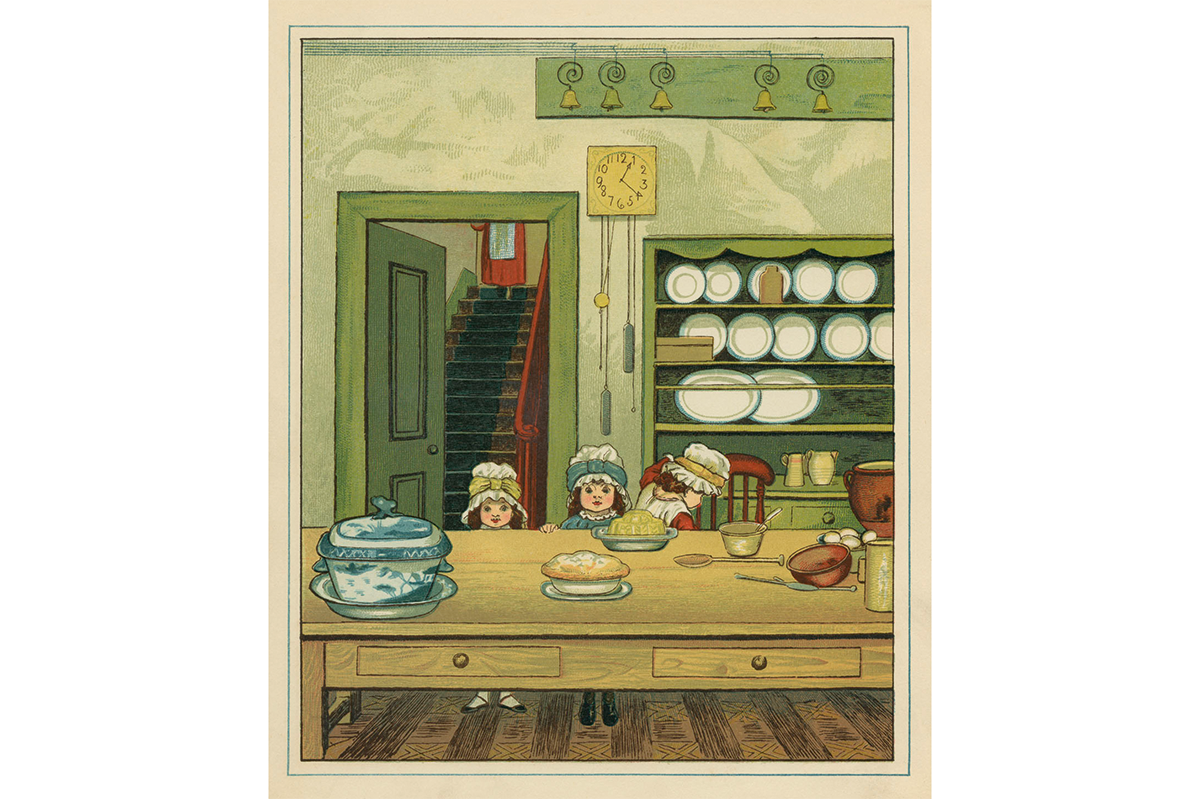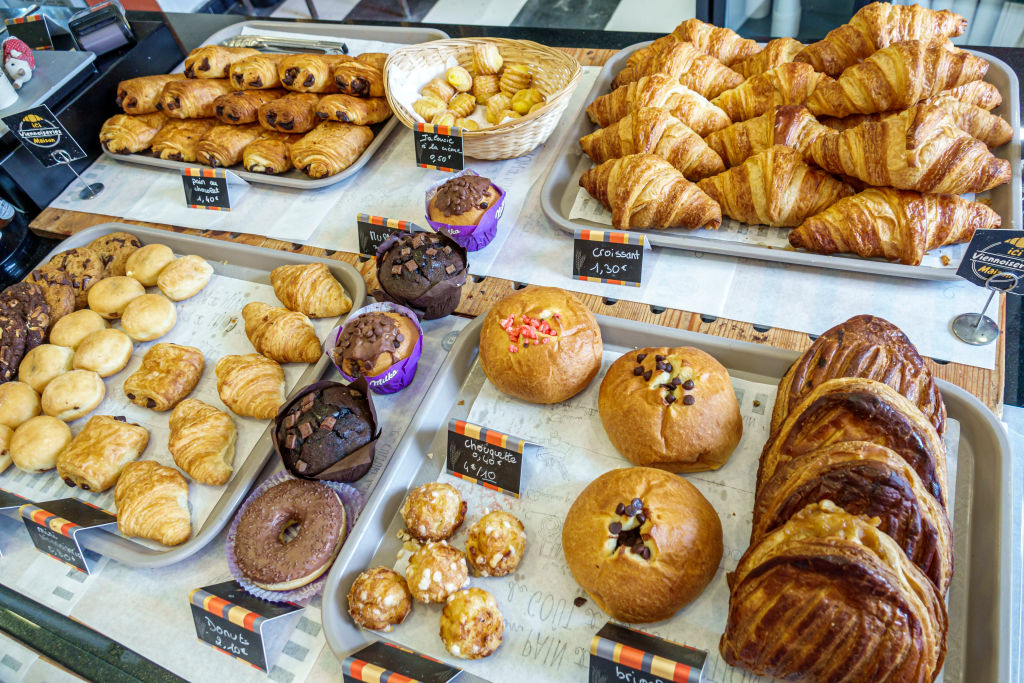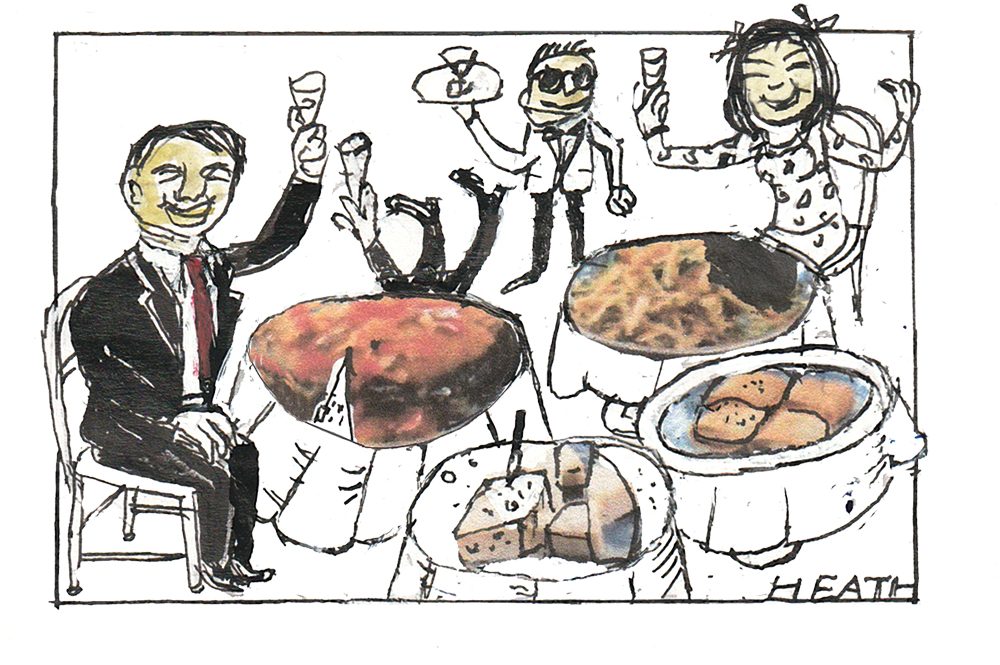I often think of the first time I ate brown bread ice cream. I know how that sounds: it’s the exact sort of pretentious nonsense a food writer would say if they were about to press a recipe for brown bread ice cream on you. But it was long before I became a food bore, and it’s true. I really do think about that first time a lot.
I had just moved to London to study law after university, and was about to train as a barrister. I was living in a small flat and surviving on pesto pasta, bowls of cereal and crisps. At that point, going out for dinner probably meant a McDonald’s at the end of a night out. I knew next to nothing about food. But an unlikely set of circumstances meant that I found myself going to dinner with a food writer at a fancy Soho restaurant.
Too excited, too keen, I arrived first by some margin, and realized I was out of my depth. The extensive wine list I was handed was a complete mystery to me; I couldn’t work out which of the many words that followed each wine was its actual name. Now I wouldn’t think twice about just pointing at what I wanted, or asking for advice. But back then I thought it would mark me out as a rube, so I nursed a glass of tap water until my dining companion arrived.
When it came to actually ordering, I was extremely happy to be led. I’d never heard of brown bread ice cream before; it sounded parsimonious and old-fashioned. But it was what my friend ordered and, as with the previous two courses (and wine), I deferred to his experience. When it arrived, it didn’t do much to disabuse me of my preconceptions. A single boule in a bowl, beige with slightly darker beige freckles. I wondered why I hadn’t had the nerve to plump for a créme brûlée. I was barely paying attention to my spoon when I tried it.
But it was a revelation: I’d never tasted anything like it. The ice cream was rich and creamy, and the brown bread was in little clusters, toasted and crunchy, buttery and sweet. Like all the best dishes, it was so much more than the sum of its very simple parts. It was probably the first time I realized how good classic British cookery could be.
Brown bread ice cream has a long and distinguished history in British cookery: Mrs. Beeton, Elizabeth David and Jane Grigson all have recipes for it. But it’s a classic British pudding not only in the sense that it’s been around for ages, but also that it does what we do best: taking leftovers and transforming them into something wonderful. In fact, using leftover bread or breadcrumbs is the basis for some of our finest puddings: treacle tart, bread and butter pudding, bread pudding, queen of puddings… If there’s one thing the British know, it’s how to use up stale bread.
I tend to use rye bread for my breadcrumbs here, as it brings a nutty, earthy, malty flavor and a chewier texture, but any wholemeal bread will work. Toasting the breadcrumbs — and using browned butter — further improves the depth of flavor, as they caramelize in the hot butter and sugar, forming nubbly clusters, crunchy in some parts and chewy in others. These are folded through the ice cream towards the end of its churning. The ice cream base is a simple but classic custard (or crème Anglaise), with just vanilla and muscovado sugar. If you taste the custard before the ice cream has frozen, don’t panic if it is overly sweet. It’s harder to detect sweetness at low temperatures, so the ice cream will taste mellower than the custard does.
Happily, I don’t think it’s likely anybody is going to make me choose my favorite ice cream flavor and say it’s the only one I’m allowed to eat for the rest of my life, but if they did (what a monster!) I wouldn’t have to think twice about it. For me, brown bread ice cream is king.
Makes 1 pint
Takes 15 mins
For the ice cream
- 1 tsp vanilla paste
- 300g double cream
- 250ml whole milk
- 4 egg yolks
- 150g light brown sugar
For the breadcrumbs
- 175g rye or brown bread
- ½ tsp fine salt
- 30g butter
- 60g light brown sugar
- If you have an ice cream maker with a chamber that requires freezing in advance, put it in the freezer
- Pour the cream and milk into a saucepan, add the vanilla, and bring to a simmer. Whisk together the egg yolks and sugar in a bowl until pale
- Pour a ladleful of the hot milk and cream on to the egg yolks, whisking it to combine. Repeat twice more with a ladleful of milk, then pour the egg mix back into the pan
- Cook over a very gentle heat, stirring constantly with a spatula, until the mixture has thickened to the texture of single cream. Sieve the mixture into a bowl, cover with clingfilm directly touching the liquid, and refrigerate until completely cold
- Preheat the oven to 356°F. Crumble the bread using your hands. Melt the butter in a pan, allowing it to bubble and begin to brown before removing it from the heat. Stir the sugar, salt and breadcrumbs through the browned butter, then pour the crumbs on to a baking tray in a layer. Bake for fifteen minutes, then let cool
- For ice cream makers, churn according to the instructions. Towards the end, stir the breadcrumbs through the mixture. Serve immediately for soft serve, or decant into a container and freeze
- If you don’t have an ice cream maker, pour the cold custard into a freezer-safe container. After thirty minutes, remove from the freezer and gently whisk, breaking up any ice crystals. Repeat every thirty minutes until the mixture is thick and very smooth. At the end, stir the breadcrumbs through the mix and freeze for thirty minutes before serving
This article was originally published in The Spectator’s UK magazine. Subscribe to the World edition here.


























Leave a Reply